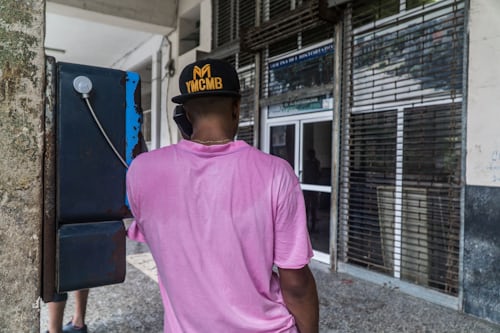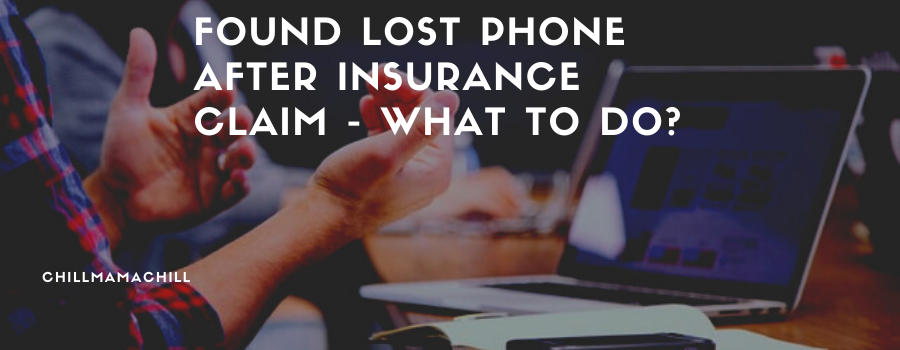You can misplace or lose items and then find them again. Even stolen stuff is sometimes returned, complicating matters if you’ve finished claiming for coverage replacement. But what if you found a lost phone after an insurance claim? Are there clear procedures on what to do?
Once your phone has been replaced, the old one belongs to the insurance company, whether lost, broken, or damaged. As such, the best course of action is to send it to them, though your premiums may still be affected.
So, you’ve found your lost phone undamaged and in perfect working condition? The matter now rests with your insurance carrier’s claims department. You may be asked to return the old device and keep the claim payment or vice versa. Keep reading to learn what to do depending on available options, all the while avoiding insurance fraud.
Will Cancelling My Insurance Claim After Finding Lost Phone Impact Premiums?
One time I went shopping for some pants, and as is customary, I had to try a few on. After leaving there and running a few more errands, I started looking for my phone to call someone. What followed was a confused frenzy and mix of emotions; I was looking for the gadget in places I hadn’t left it, even upending the seats of my car.

I called and called my number, the phone was ringing, but no one picked up. Its data, Wi-Fi, and GPS connection were off, and I couldn’t locate it via the Find My Phone App. Since I had insured it, I called my provider and made a replacement claim. A few days later, I had a new device and almost forgot about the old one, when a kind soul found it and called me.
Only then did I realize that I must have placed my phone inside the dressing room as I changed, leaving it where it couldn’t be readily seen. Usually, my device is on ‘vibrate,’ and nobody heard my initial frantic calls vibrating inside the noisy store. Luckily a sharp-eyed customer saw it and checked the account profile, where they found my number, which they proceeded to call.
I felt like an oaf, but I went to the store and picked up the old phone anyway, which curiously still had 8% of battery power. Only the line didn’t work as my carrier had replaced my number. My dilemma became what to do with it, seeing as the provider has replaced it for lost, and it hadn’t been blocked.
What Happens to My Lost and Found Phone When I Return It to the Insurance Company?
When you’ve insured your phone, it’s essential to know your policy. That means you must read all of it, including the terms and conditions, also known as the fine print. Coverage policies have what’s called exclusions, which stands for things not covered. You’ll also see the claim filing procedures, such as after you’ve lost it, minimizing the chances of denial.
It could be that you had made a claim after losing your phone and then found it before the insurance provider replaced it. In that case, you can cancel the claim, depending on your policy’s terms and conditions. Some policies will allow for a cancellation if you claim within a certain period, so it’s best to check the fine print for such specifics.
Whether lost and found, damaged or destroyed, the old phone belongs to the insurance company once they’ve paid your claim. Keeping it without informing their claims department can see you accused of insurance fraud. They may give you options to choose whether to repay the claimed payout or submit your old device.
After Canceling My Insurance Claim, Will I Get a Refund for the Deductible?
Usually, your policy will maintain that a claim where you’ve found the lost item must be canceled, even after they’ve paid out. That means you should return the old phone, which the carrier will block if they haven’t done so already. Most carriers block lost phones so that someone won’t try to use your cell or data service. If that happens, your insurance policy often covers the costs incurred by, say, calls overseas.
However, to bring insurance costs down, secure your plan, or prevent someone from accessing your confidential data, your phone is blocked. The most straightforward action method is to let your insurance provider know of the recovery, and they’ll ask you to part with the old phone. That’s straightforward unless you’ve been charged a deductible or they’re asking for a claim repayment.
Also known as excess fees, some providers, and especially for expensive gadgets, will offer a minimum payout of something like $500, and you top up the remainder. If you were to repay the claim, you’d be counting the amount paid as deductible, a loss on your part. These fees depend on your carrier and the device, and you’re limited to making two claims every 12 months.
Some of the big carrier-provider deductibles work out as;
- AT&T charges $8.99 per month with deductibles of between $25 and $299
- Sprint’s plan costs between $9 and $17 monthly with deductibles of $50 and $275
- T-Mobile has a $7 and $10 monthly and deductibles of up to $275
- Verizon’s policy costs $5 for basic phones and tablets or $9 for smartphones, and deductibles are between $99 and $199

Other coverage options include AppleCare+ whose 2-year cover costs $99 to $199. Two damage incidents and phone malfunction are covered, but you pay a $29 deductible for screen damage and $99 for other damages. SquareTrade offers a monthly plan costing $8.99 for each device with deductibles that range between $25 and $99.
How Do I Cancel My Phone Insurance Protection Plan Having Found the Lost Device?
Say, for instance, you’ve recovered your old phone after making a successful insurance claim. But your lost and found device isn’t blacklisted or locked, and you decide to keep it instead of the replacement one for sentimental reasons. Many phone insurance carriers will give up an option to cancel a claim, but coverage, exclusions, and cancellation procedures differ.
One of the easiest but not always fruitful ways to cancel your claim and hold on to your old phone is to contact your provider’s customer care services. Many times, it’s your carrier offering insurance, and consumer services will direct you to the right person to talk to.
You can also locate the insurance company’s web portal and cancel using your claim number. All major wireless carriers that offer coverage provisions will have an outlined cancellation procedure. The same can be done for others, such as for third-party or aftermarket providers. Many have dedicated apps where you can make, track, and cancel your claim.
However, one thing to note is the grace period given for claim cancellation, which is often seven days. If this statute of limitations expires, your replacement is considered permanent. In that case, the only option left is to return the recovered phone after you’ve downloaded your contacts, pictures, music, or other confidential stuff.
How Can I Contest an Unfair Claim Process with My Phone Insurance Provider?
Mobile phone insurance coverage is big business, an industry that’s become a valuable safeguard for consumers. Due to these opportunities, however, providers face insurmountable risks from false, overstated, or dishonest claims. One example is if you keep for use, sale, or giving away your lost and found device after the provider has replaced the handset.
Your insurance provider can check if your phone has been reported stolen to the carrier to reduce the likelihood of fraud. While your case may not land you in hot water, being found out will cause the cancellation of your policy or cell plan. Besides, such providers could blacklist you, causing a denial of policies or relegation to higher premiums with other insurers.
While you’re processing your replacement claim and canceling the same, keep records of correspondence between you and your provider. You can write down the names of those you spoke to, plus the time and dates you made those calls. If you feel you’ve been unfairly treated, find your local insurance ombudsman to contest your provider’s actions.
For instance, your old phone cost $700, but the value of your replacement is $600. If your policy’s payout maximum is $500 for any single item, you’ll be charged a deductible of over $100. When you decide to return the recovered handset, your insurance provider is supposed to refund your excess fee as well.
Issues may arise if you’ve sent the old phone back to the insurer, and yet they claim you’re to repay the $500. Such a case could result from miscommunication or mixed-up records, and the ombudsman will help negotiate a resolution on your behalf. Since the recovered phone belongs and has been given to them, they’re supposed to refurbish or use parts for other replacements.
Conclusion
When you’ve found a lost phone after an insurance claim, your provider can also agree to sell you the recovered handset, but at salvage price. Often, after finding out what to do, the claim payout doesn’t match the cost you paid for it. That’s especially true if they’re using the actual Cash Value instead of the Replacement Cost valuation procedure. ACV repays lower due to factoring inflation or higher when the item has devalued on the market. The latter RCV doesn’t consider price fluctuation and will replace the covered device at the price you bought it.

I’m Cathrine and I’m a 39-year-old mother of 3 from Utica, New York. And I’m extremely happy you’ve come to visit my hide-out on the web. Here I post about everything related to family-life and usually it will involve babies and lessons I’ve learned over the years from experts, friends, and my own mistakes. So hopefully you will find what i write fun and informational!

